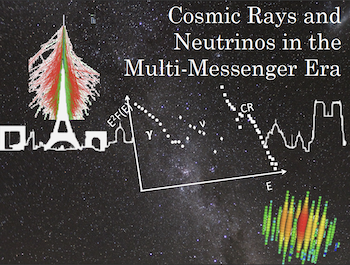Orateurs
Description
The Radar Echo Telescope for Neutrinos (RET-N) project aims to detect astrophysical neutrinos with energies of 10 PeV (10$^{16}$ eV) and above using the radar echo technique. The results of SLAC experiment T-576 show that a high-energy neutrino interacting in a dense medium like ice will create a short-lived plasma with the ability to reflect incoming radio waves. By detecting the reflection of transmitted radio waves, the energy and direction of the neutrino can be reconstructed.
Current neutrino observatories based on the detection of Cherenkov light can efficiently cover a detection volume large enough to detect neutrinos up to an energy of approximately 10 PeV. At higher energies, neutrinos can be detected via the direct radio emission from the neutrino-induced cascade (the Askaryan effect), which typically leads to peak sensitivities around 1 EeV (10$^{18}$ eV), but can also be detected using the radar echo technique, which could potentially cover the full energy range from 10 PeV up to the EeV scale.
RET-N will be preceded by the Radar Echo Telescope for Cosmic Rays (RET-CR) experiment, which will use the radar echo technique to detect in-ice cascades produced when an ultra-high energy cosmic ray shower impacts the ice of a high-elevation ice sheet, producing a dense in-ice cascade similar to a neutrino-induced cascade. Here we present details of detector optimization studies for RET-CR and RET-N, including the feasibility of detecting in-ice particle cascades induced by high energy cosmic rays. We also present the modeling efforts to predict the radar signal from an ultra high energy neutrino or cosmic ray induced particle cascade, and projected sensitivity for both experiments.
| Related session | Searching for neutrinos |
|---|

